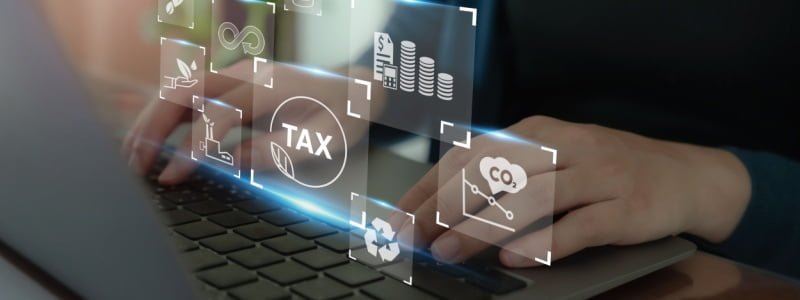When beginning your start-up journey, it is important to ensure that you give yourself the greatest chance for success. Maximise the cash refunds available for start-up on your eligible R&D activities in Australia.
All too often we see situations where, for a variety of reasons, someone is unable to claim R&D expenditure on otherwise eligible R&D activities. We have produced this guide to make you aware of some of the potential pitfalls for start-ups and provide some things to consider when forming a company and conducting early stage research and development.
1. When to Incorporate and What Group Structure to Have
There are several considerations to be made when it comes to formally incorporating your business. Chief among these is to when to incorporate and what type of group structure to employ. As an Australian entity, to obtain the R&D Tax Incentive you must be incorporated (individuals, partnerships, trusts are not eligible) and, in most cases, have notional deductions of at least $20,000. Setting up a company structure as soon as R&D activities commence is generally a good idea as it allows you to recognise expenses as they are incurred and ensure that the actual cost of your development is correctly captured.
That being said, there may be other grants or incentives that you may wish to access that have strict early-stage requirements or are only available to companies under a certain size – for example Early Stage Innovation Company (ESIC) status that is generally only available to companies incorporated within the last three income years with income and expenses below certain thresholds.
When setting up a business it is also important to consider group structure including whether to have separate operation, research and IP companies, whether to have a trust structure and what implications historical structures may have when seeking external investment etc. A key requirement of the R&D Tax Incentive programme is that a company can only claim expenditure conducted ‘for’ itself i.e. R&D activities conducted – to a significant extent – for some other entity will not be claimable.
- This means that you must carefully consider who in a group is conducting eligible activities, who is paying for these activities, who owns the IP etc. For whom R&D activities are being conducted is generally a matter of fact and can be determined by examining internally produced documentation (such as emails, contracts, board minutes, bank statements etc.) and who:
- Has effective ownership of the results of the R&D activities.
- Controls the scope and progress of those activities.
- Bears the financial burden of carrying out the R&D activities.
Additionally, shareholding structures and day to day running of the company should be examined to determine whether what entities may be considered associates of the company or who may be affiliated with or connected with the R&D entity, as this may have implications on the eligibility of certain expenditure items when you claim R&D expenditure or whether the company is eligible for the refundable R&D Tax Offset (as opposed to the non-refundable R&D Tax Offset).
2. Instituting Robust Record-Keeping Practices
As the R&D Tax Incentive is a self-assessment programme, it is essential for companies to keep sufficient documentary evidence to (a) demonstrate that the R&D activities they have conducted meet all legislative requirements of the programme and (b) that the actual cost of the R&D activities can be accurately calculated. The administrators of the programme – AusIndustry and the ATO – have the power to audit or review claims for up to five (5) years in most cases, and failure to keep contemporaneous documentation (i.e. records produced at the time activities were conducted) may lead to having to pay back tax refunds already received.
- There are no types of records that are specifically required by the legislation, however there are a few areas where it is crucial to keep documentary evidence including:
- Maintaining contracts to demonstrate that activities being conducted by internal or external contractors are conducted ‘for’ the claimant company.
- Timesheets (or other time allocation methodologies) for employees who are directly contributing to R&D activities or projects, such that their time can be accurately allocated to eligible activities.
- Technical documentation that demonstrates activities are being conducted for the purpose of generating new knowledge, have an outcome that is scientifically / technically unknown and that a systematic progression of work based on scientific principles is being undertaken.
Instituting robust record-keeping practices is required for companies to be assured that they will not have to repay amounts received in the event of an adverse finding and has a several flow on benefits. Good records make the end of year claim process more efficient, have the potential to increase the value of claims and assist in the preparation of documents relating to grant submissions, patent applications, investor presentations etc.
Whether to Pay Founders
A common reason that companies are unable to make an R&D claim is they simply have not spent enough money. This may be despite the founders investing significant amounts of time and sweat equity into development activities. For a development cost to be eligible it must be recognised as an expense in the company accounts – sweat equity is not eligible.
Further, where amounts are being incurred to associate entities, R&D Tax refunds will only be available in the income year where these amounts are paid. An understanding of this is crucial to ensuring that important cash flows from R&D Tax refunds are maximised. When setting up a company you should consider how to recognise the efforts of founders and early stage employees and what impacts this has on, not only the business itself, but also the tax positions of the founders and early stage employees.
If you want to treat certain personnel as employees, you should ensure that proper payroll procedures are set up and all obligations are met. Alternatively, recognition of founders as contractors may be more appropriate and aligned with the interests of the parties involved. In this case, official contracts should be prepared and executed sufficient to demonstrate adherence with the requirements of the R&D Tax Incentive programme.
If able to, it is generally a good idea to ensure that any outstanding amounts that have been incurred to associate entities are settled prior to the end of the financial year. Doing so will ensure that any R&D expenditure incurred to associates can be claimed as a notional deduction and a refund be received instead of carrying it forward to a future year. Payment is generally achieved through a cash payment or bank transfer, but in some instances the offset of mutual liabilities may be enough to constitute ‘payment’.
4. Where to Conduct R&D Activities
When you claim R&D expenditure, eligibility includes a location-based test whereby only activities conducted in Australia will be eligible. The implication of this is that, although offshoring development activities may be cheaper on paper, the ability to obtain a cash refund for eligible R&D activities may be lost – increasing the overall cost. During the start-up phase it is imperative that this is understood and considered.
An exception to this rule is where the company can demonstrate that the activity cannot be conducted in Australia. There are a number of reasons that this may be the case but the most applicable is where you cannot conduct in Australia as conducting it requires access to a facility, expertise or equipment not available in Australia. If this is the case, a company can apply for an Advance / Overseas Finding prior to the end of the financial year in which the overseas activity takes place – so advance planning is required. Generally, a company would have to show that they have taken appropriate steps to secure the expertise in Australia prior to going offshore. This may be through advertising for the position, consultation with experts and / or obtaining statements from experts as to the lack of expertise in Australia.
Other requirements are that the overseas activity has a significant scientific link to one or more Core R&D Activities conducted in Australia and that, for the life of the project, the total cost of Australian activities is greater than the total overseas cost. Up-front planning is key to ensuring your claims are valid and you are able to maximise the value of cash refunds that you are entitled to.
The above areas are the tip of the iceberg of things to consider when setting up an R&D entity and when you claim R&D expenditure. For in depth guidance and assistance in these areas (plus more), get in touch with our expert startup consultants and increase your chances of start-up success.
Was this article helpful?
Related Posts
- Hot tax return tips for founders
We look after the entire tax and accounting situation for hundreds of founders. Do you…
- 5 Biggest Questions on Australia’s R&D Tax Incentive
Considering applying for the R&D Tax Incentive? We cover off on the 5 biggest questions…
- ESIC Tax Incentives for Early Stage Investors
If you invest in a qualifying Early Stage Innovation Company (ESIC), you may be eligible…
- R&D Tax Incentives in August with an ‘Advance Finding’
Manage the cash flow responsibly for your tech venture by lodging an Advance Finding this…

















